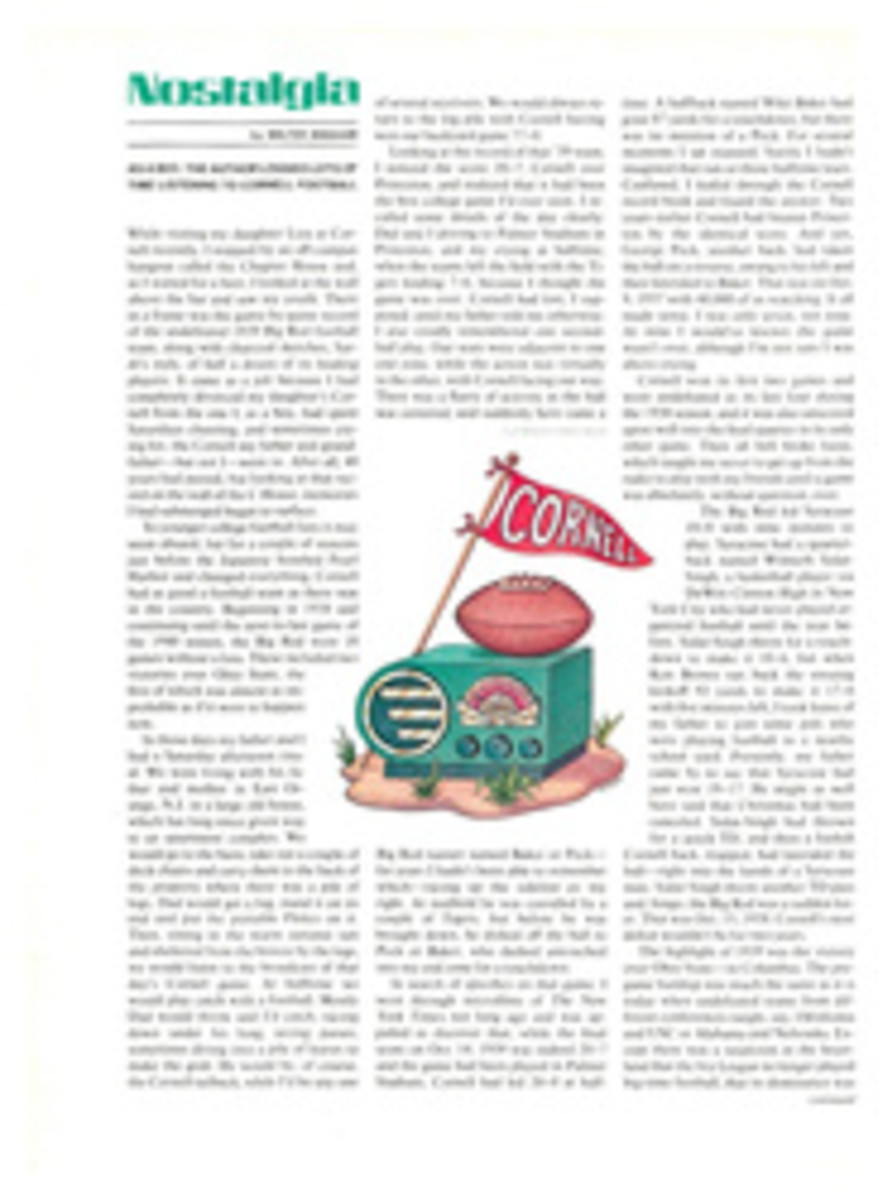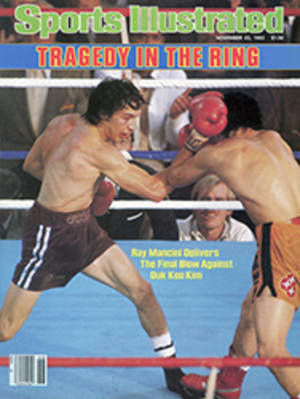
A Champ Whose Bowl Could Be A Mirage
Clemson sophomore Dale Hatcher is a powerful punter, one of only three men—the others being Ray Guy of the Raiders and Russell Erxleben of the Saints—ever to kick a football into the scoreboard gondola that hangs above the field in the Louisiana Superdome. He had averaged 45.4 yards on five kicks against Maryland last Saturday when, late in the fourth quarter, he dropped back for a sixth time in the Terps' cold, blustery Byrd Stadium. "I was going straight into the toughest wind I've ever kicked in," he would say later. With Clemson nursing a 24-22 lead and Hatcher standing on his own two-yard line, that meant trouble.
Maryland Punter Alan Sadler had muffed two kicks earlier because of the same 20-to 30-mph gusts. One had traveled only 24 yards, the other 22, and both had set up Tiger touchdowns. The two wind-aided scores had helped give the defending national champions a 24-7 lead and seemingly an easy victory—until Maryland Quarterback Boomer Esiason, using the fourth-quarter tail wind, had completed a barrage of passes, the Terps scoring two TDs, plus a two-point conversion. Now, Hatcher took the snap.
"Just as I dropped the ball to kick it," he said, "a big old gust came and pushed down the nose of the ball. It hit my foot wrong." His wobbly punt went almost straight up and plummeted down on the Clemson 23. Then it hopped back toward Hatcher and died on the Clemson 21. The ball had traveled only four yards past the line of scrimmage and had put the Terrapins in perfect position for a winning field goal.
Maryland's first SRO crowd in two years—51,750 fans had squeezed into the 45,000-seat stadium—shook red and white pompons and towels and pennants while a pumpkin patch of orange-clad Clemson rooters sat glumly in the northeast corner of the stadium. What was at stake here was at least a share of the ACC title, which the Terrapins hadn't won since 1976. Both teams were undefeated in conference play, with Clemson 6-1-1 overall and Maryland 7-2. For the first time since 1976, a major television network (CBS) was in College Park, as were scouts from six bowls. "People tell me it's never been like this here—ever," said Terp Defensive Tackle Mike Corvino, a senior.
Clemson, of course, was used to such hoopla. By winning last year's national title with a 22-15 Orange Bowl victory over Nebraska, the Tigers had forever escaped the obscurity of rural South Carolina. "Know where Clemson was?" says former Tiger Coach Frank Howard, now 73 and still active around his old school. "Hell, folks used to ask if a Clemson was a fruit or a vegetable."
Unfortunately for the Tigers, the NCAA Committee on Infractions also took keen notice of Clemson, and it found the football program to be a fruit, a bad apple. Having concluded an 18-month investigation in late October—the probe reportedly uncovered something like 150 rule violations—the NCAA now is expected to bar the Tigers from bowl and television appearances for two years. The penalties are likely to be announced this week.
After losing its opener 13-7 to Georgia in September and tying Boston College 17-17 in its second game, Clemson had plenty of other worries, including twice as many injuries as in 1981. The victims have included senior Quarterback Homer Jordan, star of the national championship team, who damaged cartilage in his right knee in the preseason. Jordan limped through four games before undergoing arthroscopic surgery in October, but what may have hurt him more was being implicated in the NCAA investigation. Clemson President Bill L. Atchley barred Jordan from playing against Kentucky on Oct. 2 because he feared Jordan might have been in "technical violation" of the NCAA constitution in allowing a member of Clemson's booster club to co-sign a loan Jordan used to buy a 1982 Chevrolet Monte Carlo. "I never really knew what was going on," Jordan says. "I still don't." That Jordan was reinstated immediately after the Kentucky game certainly didn't lessen the confusion.
Who would quarterback the Tigers on any given series last Saturday was a mystery, too. Even though Jordan was healthy, Coach Danny Ford started sophomore Mike Eppley for the fourth straight week, a decision that seemed justified when Eppley led the Tigers 65 yards to a touchdown on their first possession, a 17-play drive that ended with a five-yard scoring run by Tailback Cliff Austin. On Clemson's next possession, however, Ford sent out Jordan. Ford then switched back to Eppley, then briefly to Jordan, then back to Eppley again. Afterward, Ford didn't do much explaining. Of the two, Jordan has a stronger arm and—particularly important in running the Tigers' option against Maryland's eight-man defensive front—better outside speed. However, Eppley, the starting point guard for Clemson's basketball team, executes the option more deftly. "It's similar to running a fast break," he says. Certainly his superb fakes and pitches befuddled Maryland and spearheaded the two short touchdown drives that followed Sadler's shanked punts late in the first and third quarters.
Clemson's physically imposing defense, led by nose guards William (The Refrigerator) Perry and William (Icebox) Devane, meanwhile, chilled Maryland in the early going. Perry, a 320-pound sophomore, and Devane, a 265-pound junior, were also alternating every few downs. "It's like having two nice houses," explains Tiger Defensive Coordinator Tom Harper. "You can't live in but one at a time." By trying to run in such a neighborhood, the Terps failed to make a first down until the second quarter.
But after Tailback Chuck McSwain had put Clemson ahead 14-0 early in the second quarter, Maryland finally got its multiple-set offense moving. Mixing runs and short passes—first-year Coach Bobby Ross, a former Kansas City Chief offensive backfield coach, likes a 50-50 blend—Esiason took the Terps 77 yards in 14 plays, with freshman Fullback Rick Badanjek scoring from the one. This was the style of play that had worked all season for Maryland. It had helped boost 1982 home attendance by 7,000 per game, to 38,000, and now it brought the Terps to halftime trailing only 14-7.
The new excitement in Maryland football had actually started with something Dull—Dick Dull, 37, an attorney who took over as Maryland's athletic director in the summer of 1981. In December, when Jerry Claiborne, who had led the Terps to nine straight winning seasons with his conservative offensive philosophy, left for Kentucky, Dull announced, "Defense is a must, but a wide-open offense transcends defense. Winning is important, but the bills must be paid. I want a coach who can put people in the stands."
Dull hired Ross, 45, who, in turn, signed on seven assistants with master's degrees to teach his complex system. By the end of the summer Ross had not only a wide-open offense but a locker room lounge and $50,000 in new Nautilus equipment. Meanwhile, Dull replaced Rodney Dangerfield, the school's sports pitchman, with Susan Anton, who in new Terp TV spots closes her eyes and coos things like "I have a passion for all things new. Join me." Passion, get it?
Anton would have shut her eyes for a different reason during Saturday's third quarter, when the Terps fumbled twice, Esiason threw an interception at Clem-son's goal line and the Tigers increased their lead to 21-7 on Fullback Kevin Mack's one-yard touchdown run. A 16-yard field goal made it 24-7 early in the fourth quarter before the 6'4" Esiason took charge and passed Clemson dizzy. He directed touchdown drives of 79 and 71 yards in a span of 4:08, finishing the first with a 37-yard TD strike to Wide Receiver Greg Hill and letting the 5'10", 214-pound Badanjek barrel across for both the second touchdown and a two-point conversion. "Ricky's like a bowling ball rolling around that corner," says Esiason. Indeed, on 55 carries this season Badanjek has scored nine TDs.
Then Hatcher's four-yard punt seemingly set the table for a Terrapin victory. But on second down after the punt, the Terps were called for holding and the ball was pushed back to the 30, out of field-goal range. On the third snap, Esiason threw. He hit Tight End John Tice with a screen pass in the left flat and watched Clemson's All-America free safety, Terry Kinard, drive into him. Tice, a 6'6" senior, was having a Kellen Winslow game; the reception was his 11th of the day, a school record, and even a fourth-quarter concussion had failed to slow him. Kinard, however, punched the ball out of his hands, and Tiger Cornerback Reggie Pleasant fell on it.
The Terps got one more shot from their own 40 when Clemson was forced to punt. However, Hill dropped a 20-yard pass at the Tiger 40, and then Esiason overthrew Wide Receiver Mike Lewis at the Clemson 45. On third down, with :32 left, Esiason lofted another pass. "I floated it over the linebacker," he said. "But I also floated it over the receiver. I knew as soon as I let it go that I wanted it back." Tiger Safety Billy Davis intercepted, and the game was over.
Clemson still must play non-conference rival South Carolina next week and then Wake Forest. The latter game will be neither in Clemson nor Winston-Salem but in Tokyo, the annual affair known as the Mirage Bowl. If the expected NCAA sanctions are leveled against Clemson, the name will take on a new depth of meaning for the Tigers.
PHOTO
RONALD C. MODRA
McSwain's TD plunge put Clemson up 14-0 but the Terps were not about to turn turtle.
PHOTO
RONALD C. MODRA
Jordan has been an off-and-on quarterback because of injury and presidential edict.
PHOTO
RONALD C. MODRA
Eppley, who's deadlier at hitting hoops than receivers, gives the Tigers a better option.
TWO PHOTOS
RONALD C. MODRA
Perry (No. 66), a 320-pounder known as The Refrigerator, cooled down Maryland's running attack, but Esiason (No. 7) brought the Terps to within two points with his passing.

